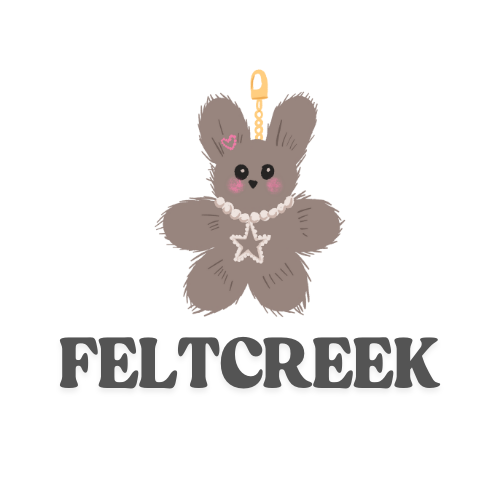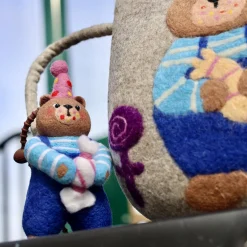Introduction
Across continents and cultures, felted bag charms have captured the imagination of designers, crafters, and consumers. Their rise in popularity marks a global appreciation for artisanal work, a shift toward eco-conscious materials, and a love for the whimsical. As 2025 unfolds, the handmade felted charm is more than a trend—it’s a statement.
The Technique Behind the Texture
What makes a felted bag charm stand out is its texture—soft, dense, and slightly fuzzy. This is the result of carefully interlocking wool fibers, a process that can take hours for even the smallest charm. Needle felting uses sharp barbed needles to shape wool into defined forms, while wet felting uses soap and agitation.
Both techniques require craftsmanship and experience. Artisans often combine them to achieve lifelike expressions or stylized features on their miniature subjects.
Themes and Inspirations
From dreamy desserts and fairytale animals to seasonal decorations and humorous characters, the themes of felted charms vary widely. In Japan, “kawaii” culture drives the demand for ultra-cute charms like bunnies with mushroom hats or cats in fruit costumes. In Europe, there’s a tilt toward natural forms—flowers, birds, and rustic animals.
Some charms even have functional value, doubling as essential oil diffusers or wearable pendants.
Crafting Communities and Online Markets
Etsy, Instagram, and independent marketplaces have become hubs for the felted charm community. Creators share their process, sell their products, and engage directly with fans. Popular creators often have months-long waitlists or release limited batches that sell out within minutes.
Crafting communities also share tips and tools, host virtual felting workshops, and collaborate across borders to exchange designs and inspiration.
Why Consumers Love Them
Handmade felted charms tap into several emotional and practical desires:
Aesthetic appeal: They’re cute, colorful, and artistic.
Personal meaning: Many people commission charms to represent loved ones, pets, or hobbies.
Ethical values: Supporting handmade goods aligns with slow fashion and conscious shopping.
Gift potential: Charms are small, affordable, and perfect for thoughtful gifting.
Challenges in Scaling Handmade Goods
Despite their popularity, handmade felted charms present challenges for scaling. Each piece requires time and attention, making mass production difficult. This is also what protects their charm—the guarantee that each item is handcrafted.
Some creators have formed collectives or trained apprentices to increase capacity while maintaining quality. Others stay intentionally small, releasing only what they can make personally.
Looking Ahead
As more consumers seek authentic, handmade goods, the felted bag charm stands at the crossroads of art, fashion, and sustainability. Its future is not just bright but enduring—one where creators and buyers continue to connect through wool, storytelling, and craftsmanship.
Conclusion
The global rise of felted bag charms signals a deeper cultural movement: toward connection, meaning, and creativity. Whether worn on a tote bag, gifted to a friend, or collected as art, each charm holds a piece of its maker—and invites its owner to celebrate the handmade spirit.

 Handmade Wool Felt Candy Bear Charm – 100% Wool – Soft Bear Design
Handmade Wool Felt Candy Bear Charm – 100% Wool – Soft Bear Design